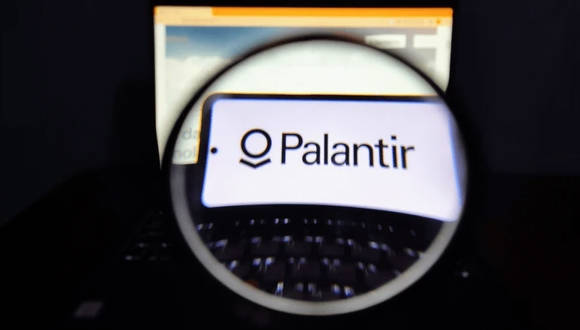
Ultima Markets App
Trade Anytime, Anywhere
Important Information
This website is managed by Ultima Markets’ international entities, and it’s important to emphasise that they are not subject to regulation by the FCA in the UK. Therefore, you must understand that you will not have the FCA’s protection when investing through this website – for example:
- You will not be guaranteed Negative Balance Protection
- You will not be protected by FCA’s leverage restrictions
- You will not have the right to settle disputes via the Financial Ombudsman Service (FOS)
- You will not be protected by Financial Services Compensation Scheme (FSCS)
- Any monies deposited will not be afforded the protection required under the FCA Client Assets Sourcebook. The level of protection for your funds will be determined by the regulations of the relevant local regulator.
Note: Ultima Markets is currently developing a dedicated website for UK clients and expects to onboard UK clients under FCA regulations in 2026.
If you would like to proceed and visit this website, you acknowledge and confirm the following:
- 1.The website is owned by Ultima Markets’ international entities and not by Ultima Markets UK Ltd, which is regulated by the FCA.
- 2.Ultima Markets Limited, or any of the Ultima Markets international entities, are neither based in the UK nor licensed by the FCA.
- 3.You are accessing the website at your own initiative and have not been solicited by Ultima Markets Limited in any way.
- 4.Investing through this website does not grant you the protections provided by the FCA.
- 5.Should you choose to invest through this website or with any of the international Ultima Markets entities, you will be subject to the rules and regulations of the relevant international regulatory authorities, not the FCA.
Ultima Markets wants to make it clear that we are duly licensed and authorised to offer the services and financial derivative products listed on our website. Individuals accessing this website and registering a trading account do so entirely of their own volition and without prior solicitation.
By confirming your decision to proceed with entering the website, you hereby affirm that this decision was solely initiated by you, and no solicitation has been made by any Ultima Markets entity.
I confirm my intention to proceed and enter this website Please direct me to the website operated by Ultima Markets , regulated by the FCA in the United KingdomPalantir Stock Split: What Happened and Why
If you’re googling about the palantir stock split, you’re probably wondering whether you missed a split and whether another one might be coming. This guide cuts through the rumours and explains what has really happened so far, what analysts are watching, and how a future split could affect Palantir investors.
Has There Been A Palantir Stock Split?
The short answer is no.
Since Palantir Technologies Inc listed in 2020, there has never been a stock split for the U.S. listed PLTR shares on Nasdaq. Major market data providers, company filings and investor materials show no record of any past split. As of mid November 2025, Palantir has not announced a stock split for its common stock.

Recent company reports, including current reports on Form 8 K, discuss earnings and operational updates but do not mention a stock split resolution, record date or payable date. If Palantir’s board approved a split, it would appear in an official press release and in a filing with the U.S. Securities and Exchange Commission.
From the perspective of U.S. shareholders, there is no Palantir stock split in effect right now. The confusion in the market comes from somewhere else.
Where The Confusion Comes From The Canadian CDR Split
You may have seen headlines or social posts about a 4 for 1 split linked to Palantir stock. That event is real, but it did not involve the U.S. PLTR shares.
The split applied to Canadian Depositary Receipts, or CDRs, that track Palantir and trade on Cboe Canada. The issuing bank adjusted the Palantir CDR in a 4 for 1 split. Holders of the CDRs received four times as many receipts, while the quoted price per receipt adjusted lower so that the total value of their position remained the same at that moment.
A few key points.
- This was a corporate action in Canada carried out by the CDR issuer
- It affected Canadian investors trading the Palantir CDR in Canadian dollars
- It did not change the share count or price of PLTR on Nasdaq inthe United States
Because both instruments carry the Palantir name, some headlines and snippets on social media have blurred the difference. That has led to the mistaken idea that “Palantir did a 4 for 1 stock split” for all shareholders. For U.S. PLTR holders, that is simply not the case.
Would A Palantir Stock Split Actually Happen
Since we’ve cleared up the confusion between the Canadian CDR move and the actual U.S. PLTR stock, the next thing investors want to know is this how likely is a Palantir stock split in the near term?

What analysts and the market are watching
Commentary around a potential palantir stock split generally rests on three points.
- Share price and momentum
Palantir’s share price has moved into the low hundreds, putting it in the same “optics zone” where other tech names have chosen to split. When a stock becomes expensive in nominal terms, it often appears on analysts’ “possible split candidates” lists. That does not guarantee anything, but it keeps Palantir in the conversation. - Retail investor base
Palantir has a loyal and vocal retail following. Analysts who argue a split is “likely” often point to this shareholder mix. A lower price per share can make the stock feel more approachable for smaller accounts, and companies with a strong retail base sometimes use splits to align with that audience. - Peer behaviour
Recent splits by large technology and software names create a kind of informal playbook. NVIDIA, Arista Networks, Netflix and ServiceNow all chose splits after strong rallies, and each decision generated extra attention. When Palantir’s name appears alongside these peers, it is usually because commentators are asking who could follow the same path, rather than because Palantir itself has said anything.
So far, Palantir’s management has not publicly committed to a split. There is no board resolution or timetable in official filings. Analyst remarks about a possible palantir stock split are best read as informed speculation, not as guidance from the company.
Why People Expect A Palantir Stock Split
Even without an official announcement, analysts and commentators often bring up the idea of a palantir stock split. There are a few reasons for this.
High share price and retail interest
Palantir’s share price has climbed significantly since its early trading days. Once a stock’s nominal price moves into the low hundreds, market participants often start talking about a potential split. A lower price per share can:
- Make round lots feel more accessible to smaller investors
- Improve perceived affordability for retail traders
- Sometimes support trading activity if demand is already strong
Palantir also has a large and active retail shareholder base. When a company has many small investors and a rising price, the topic of a stock split naturally gets more attention on social platforms and in market commentary.
The broader “split cycle” in big technology names
Palantir operates in a sector where several large technology and software companies have recently used stock splits. For example:
- NVIDIA carried out a 10 for 1 split in 2024 after a major run in its share price
- Arista Networks completed a 4 for 1 split in late 2024
- Netflix proceeded with a 10 for 1 split in 2025
- ServiceNow announced a planned 5 for 1 split, subject to approvals
In each case, the share price had moved higher and the company chose to repackage its shares to keep them more approachable. This pattern has encouraged analysts and commentators to ask which growth stocks might be next.
Palantir fits this profile from a price, growth and sentiment perspective, so it often appears in speculative lists, even if the company itself has not signalled any decision.
Would A Palantir Stock Split Be Bullish Or Bearish
For most traders, the real question is simple. If a palantir stock split happens, is that likely to help the share price or hurt it.

What history suggests
Studies on past stock splits generally find modest positive returns around the announcement and in the following months, especially for companies that were already doing well. Recent examples in big tech like Apple, Tesla and Nvidia also saw strong rallies between the split announcement and the effective date, helped by extra media coverage and retail interest.
This is why the market often treats splits as a short term bullish signal, particularly in popular growth names.
How that could play out for Palantir
If Palantir announces a stock split, investors are likely to read it as:
- A sign that management is comfortable with current momentum
- A way to make PLTR feel more accessible to smaller accounts
- A potential catalyst for extra trading interest around the key dates
In that scenario, the bias for a palantir stock split would probably be short term positive, especially from the announcement up to the first day of split adjusted trading.
Key Takeaways On Palantir Stock Split
For traders, a future palantir stock split is best thought of as a possible catalyst rather than a guarantee. If it happens, there may be a short window where liquidity, buzz and price action line up. If it doesn’t, nothing about the underlying opportunity has changed. Build your plan around levels, news flow and risk management first, and treat any split headlines as an extra layer on top, not the foundation of the trade.
Disclaimer: This content is provided for informational purposes only and does not constitute, and should not be construed as, financial, investment, or other professional advice. No statement or opinion contained here in should be considered a recommendation by Ultima Markets or the author regarding any specific investment product, strategy, or transaction. Readers are advised not to rely solely on this material when making investment decisions and should seek independent advice where appropriate.












